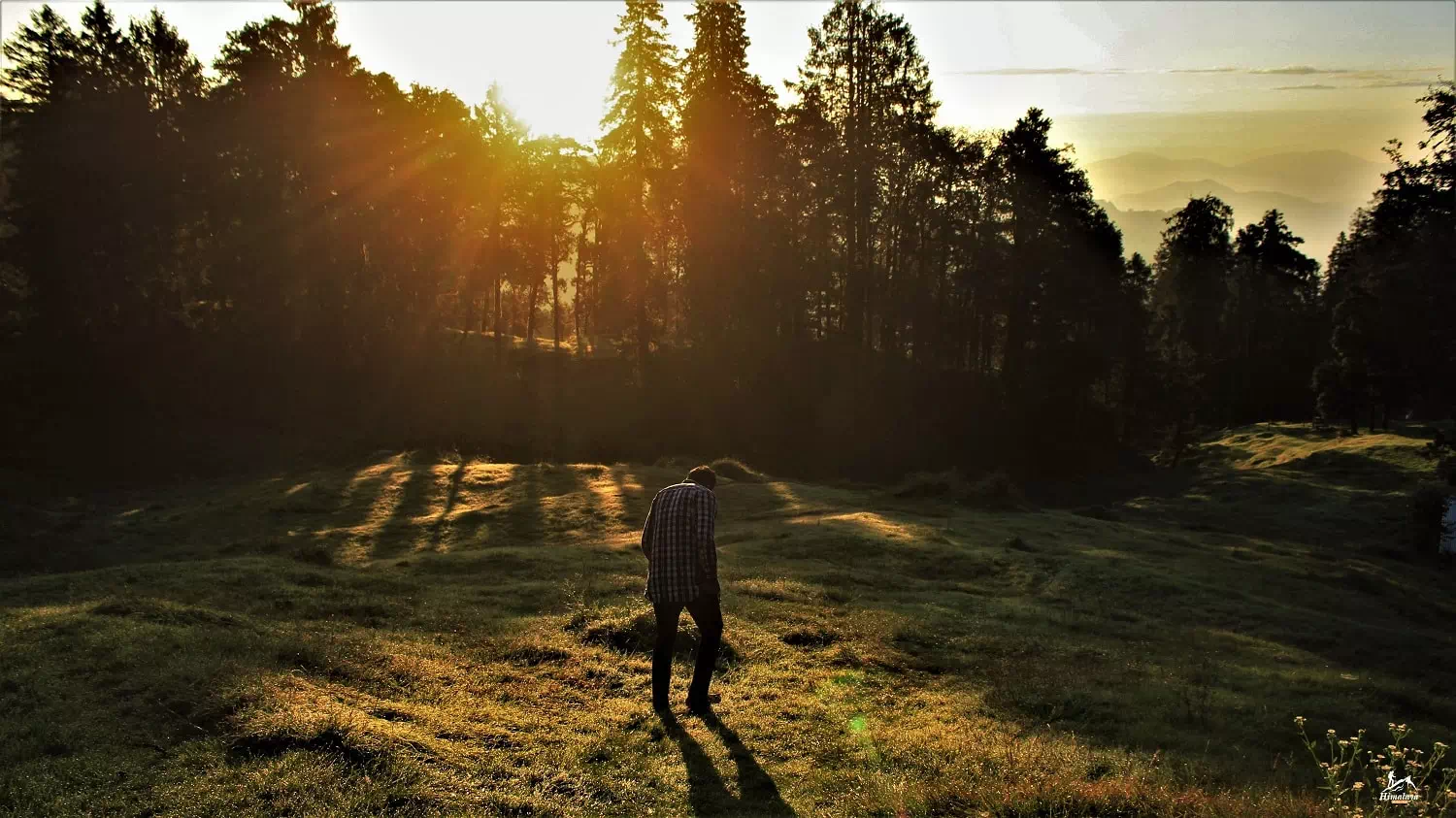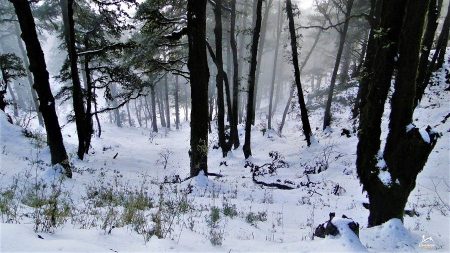The day starts from Dehradun. We follow the route to Vikasnagar via Indian Military Academy, Forest Research Institute and Institute of Petroleum. Next on the way is the industrial and educational town of Selaqui. This is the main road to Saharanpur/Shimla/Vikasnagar/Paonta Sahib and hence a lot of traffic is seen on the road. We turn right from Herbertpur Chowk towards Vikasnagar. The road now ascends towards Kalsi which is the major forest division in this region. Plenty of plantations of teak and eucalyptus can be seen along the roadside. Kalsi is a very ancient town and is mentioned in ancient texts as well. A very famous Ashokan Rock Edict is found here. It was discovered by a Britisher in 1895 and is now maintained by the Archaeological Survey of India. The language on the edict is Pali and the script is Brahmi.We cross the Yamuna at Kalsi and reach Chakrata after 2 hours via the village of Sahiya. We have breakfast at one of the dhabas in chakrata.
The trek starts from the forest chowki 4 km after Chakrata. However we would recommend walking all the way from Chakrata. The road winds among dense devdhar trees with babblers, nut-thatches, thrushes and tits to give you company. There is a small museum near the forest chowki. The views of the higher Himalayas along the way cannot be ignored. The sun rays weave through the upright trees creating a beautiful geometric pattern on the road.
The trek now moves from the tar road to a bridle path which the locals often use. The gradient is comfortable upto the small stop way of Badrikhal. This place has a dhaba run by a Nepali family and a few houses scattered around. Badrikhal is located along the saddle of the ridge which overlooks the watershed of the famous Tiger falls below Chakrata. The village of Mohna just above the falls is visible from here. The route continues till the army rock climbing institute. This camp is aptly named spider colony. It is headed by a very able army man of Tibetan origin who has climbed Mt Everest twice apart from conquering Ama Dablam and Mt Lhotse. Photography is strictly prohibited here. The trek continues along the tar road for a while. The views along the Chakrata-Tiuni road are unending. This road leads to Kanasar (30 km from Chakrata) which is a majestic open field set among large devdhar trees. In fact Kanasar has the largest diameter (girth) devdhar tree in Asia. Although no rivers are visible in the valleys, the intersecting spurs of the hills make for a beautiful vista. The campsite for the night is located amidst tall fir and pine trees and is protected from the chilling wind. A starry sky wishes you good night.




